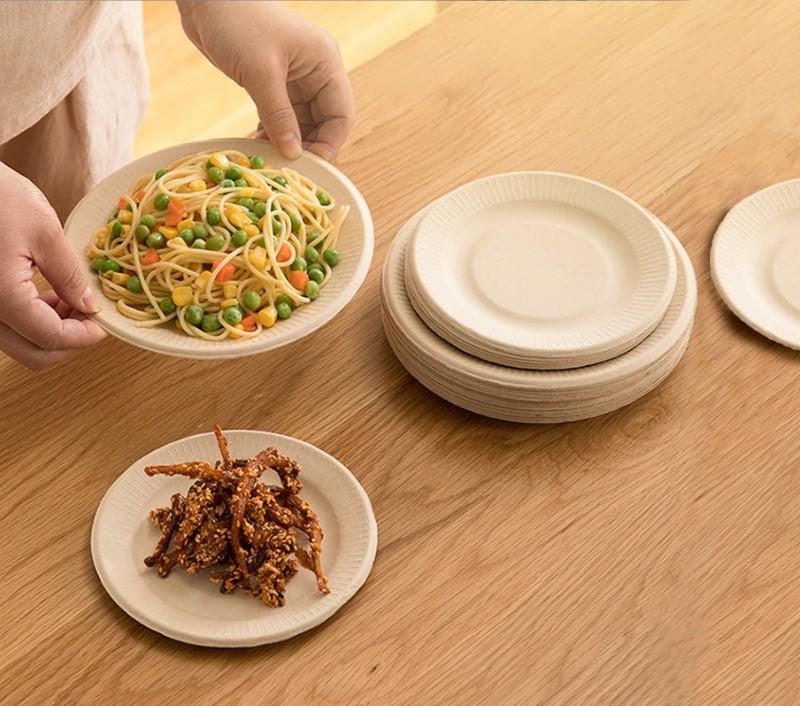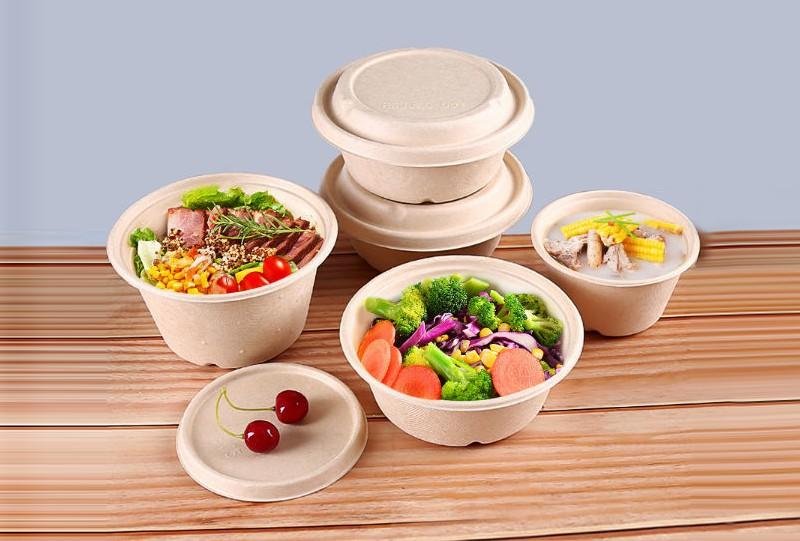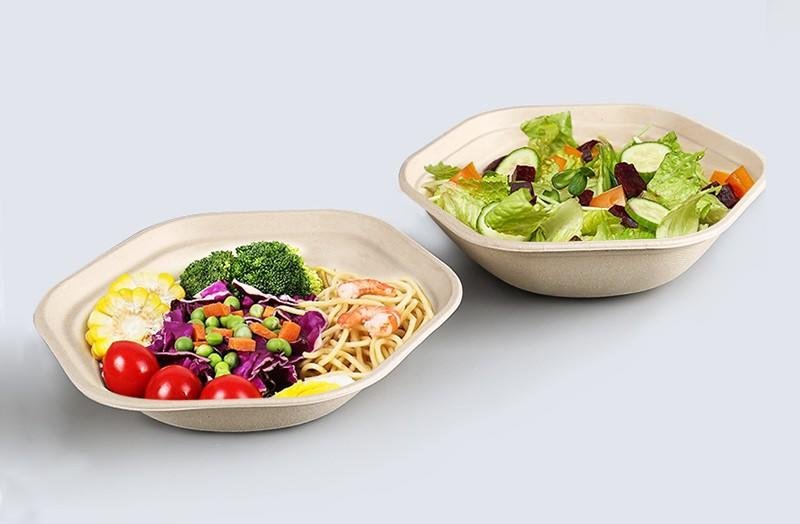
Definition:
Degradable tableware refers to tableware that can undergo biochemical reactions under the action of microorganisms (bacteria, molds, algae) and enzymes in the natural environment, causing mildew in appearance to change in internal quality, and finally forms carbon dioxide and water.
Related Photos:

Product Description:
In addition to the degradation performance of GB18006.3-2020 “General Technical Requirements for Disposable Degradable Tableware”, the finished waste should also have recycling value, be convenient for recycling, or be convenient for sanitary landfill and high-temperature composting.
Flags:
The outer surface of each degradable tableware finished product shall have a distinctive factory mark formed once. An explanatory label should be attached to the box stating the following:
1. Product name, type, registered trademark, health license number;
2. The name of the manufacturer, place of origin, batch number and date of manufacture;
3. Inspection mark and standard code;
4. QS certification;
5. Products exported abroad can also be certified by the US FDA;
Product Category:
There are two types of materials used for degradable tableware: one is made of natural materials, such as paper products, straws, starch, etc., which are degradable and are also called environmentally friendly products; The other is made of plastic as the main component, adding starch, photosensitizer and other substances.
GB18006.3-2020 “General Technical Requirements for Disposable Degradable Tableware” has stricter requirements for tableware that can be marked as “degradable”. For example, the biodegradation rate must reach more than 60%, and the starch content of degradable tableware with starch components must not be low. At present, most of the degradable tableware manufacturers in China can meet the above standards.

Finished Appearance:
1. Normal color, no peculiar smell;
2. The surface is smooth and clean, with uniform texture, no scratches, no wrinkles, peeling, no cracks and perforations;
3. The surface is free of oil, dust, mildew and other foreign matter;
4. The edges are smooth and regular. The cover with the cover is convenient and flat, and the elastic cover should not be buckled;
Skills Requirement:
Disposable degradable tableware must be made of raw materials that are non-toxic, harmless, clean and non-polluting, and comply with national food hygiene and environmental protection regulations and standards. The following raw materials, additives, coatings and chemical preparations shall not be used to make or process disposable degradable tableware:
1. Natural materials and their rough processed products without decontamination treatment;
2. Ineffective deterioration, mildew or contamination;
3. The content of harmful substances does not meet the hygienic standards;
4. Recycle materials;
5. Fluorescent whitening agent;
Green packaging should meet three points: one is easy to recycle, the other is easy to dispose of, and the third is easy to absorb, that is, it is easy to be integrated by the natural environment, but even degradable tableware is not something that can be done in a short time. Many degradable products claim that the degradation time is three months to six months, but this is actually determined in a standard laboratory environment. In the natural environment, the degradation is affected by various factors such as temperature and humidity. For example, if you put the lunch box in the where there is no water, it is difficult to degrade. Under natural conditions, degraded products take at least one year to degrade.
Distinguish:
Experts suggest that degradable tableware can be identified by several methods of “seeing, smelling, and tearing”:
First, see if there is a QS logo and number on the lunch box; Then see whether the surface of the lunch box is smooth and clean, with or without impurities or black spots. Generally speaking, transparent plastic lunch boxes are made of pure polypropylene (PP), which has a relatively high safety factor; Brightly colored lunch boxes may use waste plastic, so the darker the color, the less safe it is.
Second, touch the strength of the lunch box. The lunch box produced with recycled waste or a large amount of industrial grade calcium carbonate and talcum powder is generally poor in strength, and it will break when it is gently torn.
Third, smell the lunch box for any peculiar smell. The qualified lunch box cannot smell the smell.
The characteristics of the “black lunch box” can be summed up in six sentences: soft when hand squeezed, cracked when lightly torn, pungent smell, easy to leak when exposed to heat, paraffin mark when folded by hand, and sink in water when torn. As long as you remember the above points, you can easily distinguish whether the disposable lunch box is qualified.
Key words: Degradable tableware, natural environment, carbon dioxide and water, degradation performance, Disposable Degradable Tableware, recycling value, composting, degradable tableware, natural materials, paper products, straws, starch, environmentally friendly products, plastic, starch, photosensitizer, biodegradation , starch components, non-polluting, environmental protection, raw materials, additives, Recycle materials, degradable products, plastic lunch boxes, polypropylene (PP), waste plastic, disposable lunch box.






